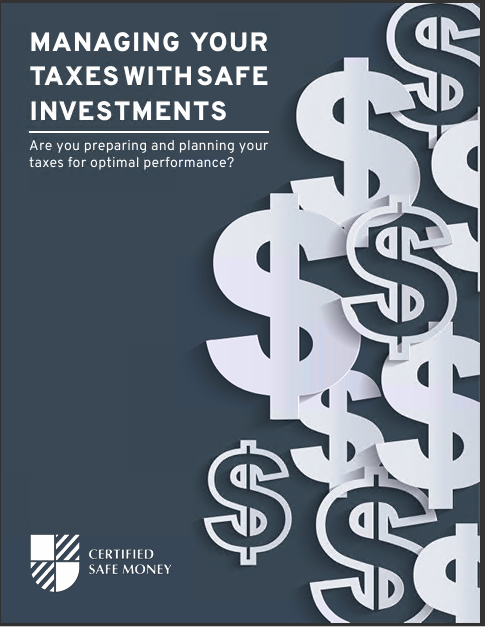Key Takeaways:
- Fixed Index Annuities offer principal protection with potential for higher returns linked to market indices.
- Variable Annuities provide growth opportunities through direct investment in the market but come with higher risk.
Fixed Index vs. Variable Annuities: Tailoring Your Retirement Plan
Planning for retirement requires careful consideration of various financial products to ensure a stable and sufficient income during your retirement years. Two popular options are Fixed Index Annuities (FIAs) and Variable Annuities (VAs). Both annuity types offer unique features and benefits, catering to different risk tolerances and financial goals. This article explores the key differences between FIAs and VAs, helping you tailor your retirement plan to your specific needs.
Understanding Fixed Index Annuities
Principal Protection and Growth Potential
Fixed Index Annuities (FIAs) are designed to provide a balance between safety and growth potential. The principal investment in an FIA is protected from market downturns, ensuring that the value does not decrease due to negative market performance. At the same time, FIAs offer the opportunity for higher returns by linking interest earnings to the performance of a specific market index, such as the S&P 500.
The returns on an FIA are subject to caps and participation rates, which limit the maximum earnings and determine how much of the index’s performance is credited to the annuity. Despite these limitations, FIAs offer a favorable balance of growth and security, making them suitable for conservative investors who want to benefit from market upswings without risking their principal.
Interest Crediting Methods
FIAs use various interest crediting methods to calculate returns. Common methods include point-to-point, annual reset, and high-water mark. Each method has its own way of measuring index performance and crediting interest, which can significantly impact the annuity’s growth.
- Point-to-Point: This method measures the change in the index from the start to the end of the crediting period.
- Annual Reset: The interest is credited based on the index’s performance over each contract year, with gains locked in annually.
- High-Water Mark: This method looks at the highest index value at specific points during the term to determine the credited interest.
Understanding these methods is crucial for investors to maximize their returns and select the best FIA product for their needs.
Fees and Riders
FIAs generally have lower fees compared to Variable Annuities. The costs are typically embedded within the product and include administrative fees and charges for optional riders. Riders are additional features that provide benefits such as guaranteed lifetime income, enhanced death benefits, or long-term care coverage. While these riders can add value, they also increase the overall cost of the annuity.
Understanding Variable Annuities
Direct Market Investment
Variable Annuities (VAs) offer the potential for higher returns by directly investing in a selection of subaccounts, which are similar to mutual funds. These subaccounts can include stocks, bonds, and other investment options, providing significant growth opportunities based on market performance. However, this direct market exposure also means that VAs carry a higher level of risk compared to FIAs. The value of the investment can fluctuate, and there is a possibility of losing principal if the market performs poorly.
Flexibility and Customization
One of the main advantages of VAs is their flexibility and customization options. Investors can choose from a wide range of subaccounts to create a diversified investment portfolio that aligns with their risk tolerance and financial goals. This flexibility allows for more active management and the potential to adjust investment strategies over time.
Fees and Charges
VAs typically have higher fees than FIAs due to the active management of the investment options. Common fees associated with VAs include:
- Mortality and Expense Risk Charges: These cover the insurance guarantees provided by the annuity.
- Administrative Fees: These cover the cost of managing the annuity.
- Investment Management Fees: These are associated with the management of the subaccounts.
- Rider Fees: Similar to FIAs, VAs offer optional riders that provide additional benefits, such as guaranteed lifetime withdrawal benefits or enhanced death benefits. These riders come at an extra cost.
It is essential for investors to carefully review and understand these fees, as they can significantly impact the overall returns of the annuity.
Comparing Fixed Index and Variable Annuities
Risk and Return
The primary difference between FIAs and VAs lies in the balance of risk and return. FIAs offer principal protection with the potential for modest returns linked to market indices. They are suitable for conservative investors who prioritize safety and want to benefit from market growth without risking their principal. VAs, on the other hand, offer higher growth potential through direct market investment but come with increased risk. They are suitable for investors who are comfortable with market volatility and seek higher returns.
Fees and Costs
FIAs generally have lower fees compared to VAs. The costs associated with FIAs are usually embedded within the product and are less noticeable, whereas VAs have multiple layers of fees, including mortality and expense charges, administrative fees, and investment management fees. Investors should carefully consider these costs when choosing between FIAs and VAs, as higher fees can erode returns over time.
Flexibility and Customization
VAs offer greater flexibility and customization options compared to FIAs. With VAs, investors can select from a wide range of subaccounts to create a diversified portfolio that matches their investment goals. This flexibility allows for more active management and adjustments to the investment strategy over time. FIAs, while offering some customization through the choice of crediting methods and optional riders, do not provide the same level of flexibility as VAs.
Income and Withdrawal Options
Both FIAs and VAs offer income and withdrawal options, but they differ in their guarantees and flexibility. FIAs often include riders that provide guaranteed lifetime income, ensuring a steady stream of payments regardless of market performance. VAs can also offer guaranteed income through riders, but the amount of income can fluctuate based on the performance of the underlying investments. Additionally, VAs may offer more flexible withdrawal options, allowing investors to access their funds more easily.
Tax Considerations
Both FIAs and VAs offer tax-deferred growth, meaning that investors do not pay taxes on the earnings until they withdraw the money. This tax deferral can be advantageous for long-term growth. However, when withdrawals are made, they are taxed as ordinary income. It is important for investors to consider their tax situation and consult with a financial advisor to understand the tax implications of each annuity type.
Tailoring Your Retirement Plan
Choosing between Fixed Index Annuities and Variable Annuities depends on your risk tolerance, investment goals, and overall financial situation. Here are some considerations to help you tailor your retirement plan:
- Risk Tolerance: If you are a conservative investor who prioritizes principal protection and stable returns, FIAs may be a better fit. If you are comfortable with market volatility and seek higher growth potential, VAs might be more suitable.
- Investment Goals: Consider your long-term financial goals and how each annuity type aligns with them. FIAs provide moderate growth with protection, while VAs offer higher growth potential with increased risk.
- Fees and Costs: Evaluate the fees associated with each annuity type and understand how they will impact your overall returns. Higher fees in VAs can erode gains, so it is crucial to weigh the costs against the potential benefits.
- Income Needs: Determine your income needs during retirement and how each annuity type can meet them. FIAs often offer guaranteed lifetime income, while VAs provide more flexible income options that can fluctuate with market performance.
- Flexibility: Assess the level of flexibility you need in managing your investments. VAs offer more customization and active management opportunities, while FIAs provide a more hands-off approach with predictable returns.
Finding the Right Balance for Your Retirement
Selecting between Fixed Index and Variable Annuities requires careful consideration of your risk tolerance, investment goals, and financial needs. Fixed Index Annuities offer principal protection and modest returns linked to market indices, making them suitable for conservative investors. Variable Annuities provide higher growth potential through direct market investment but come with increased risk and higher fees. By understanding the key differences and evaluating your individual circumstances, you can make an informed decision that aligns with your retirement objectives and ensures a secure and prosperous future.
Contact Information:
Email: kdw13@msn.com
Phone: 9143022300
Bio:
My name is Kevin Wirth and I have worked in the financial services industry for many years and I specialize in life insurance and retirement planning for individuals and small business owners, with a specialty in working with Federal Employees. I am also AHIP certified to work with individuals on their Medicare planning. You can contact me by e-mail or phone. I look forward to the opportunity of working with you on these most relevant areas of financial planning.
kdw13@msn.com
914-302-2300
Disclosure:
These articles are intended for educational purposes only. Please contact your advisors for legal, accounting or investment advice.














